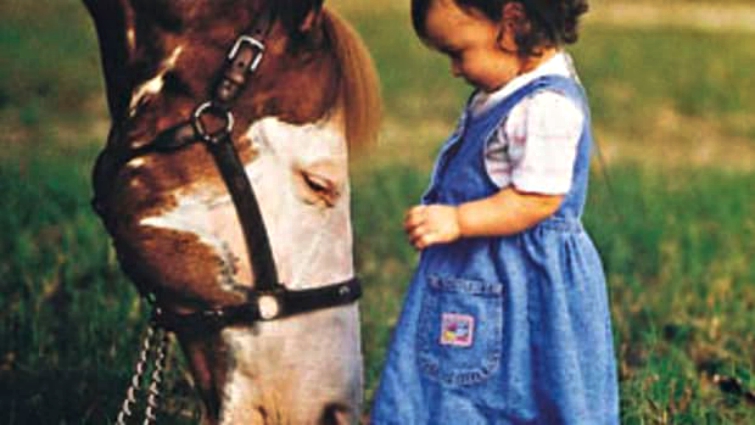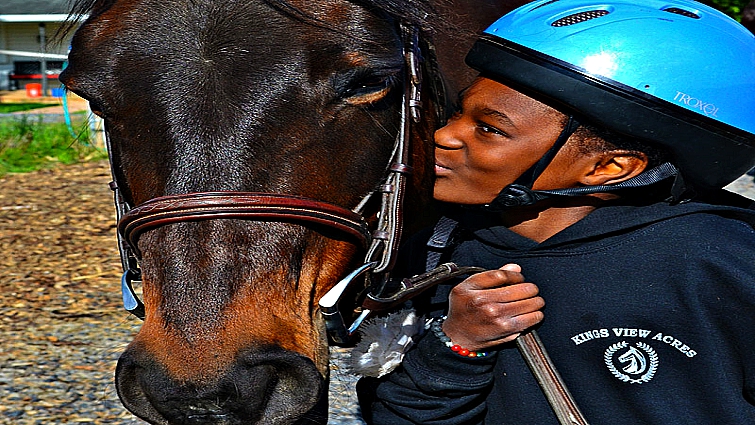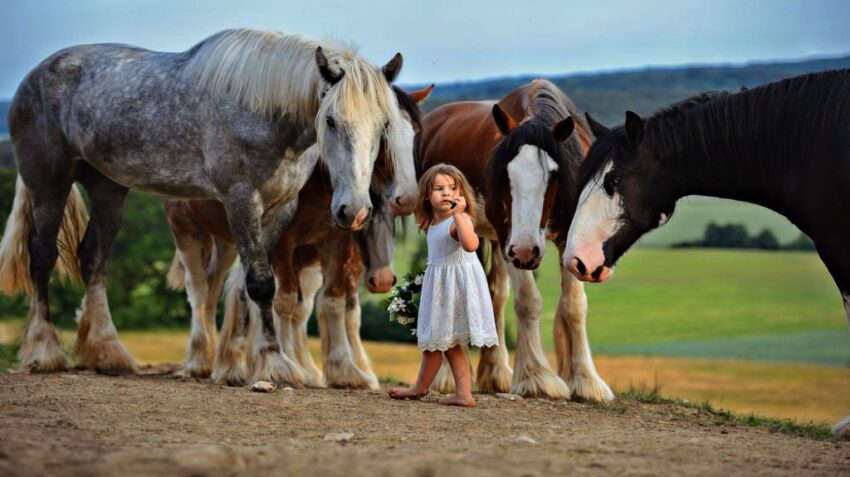Every equine parent knows that their children’s safety comes first. It doesn’t matter if you’re giving your love for horses to your kids or being around horses is a new thing for the entire family, child safety around horses should always be the biggest priority. We all know the benefits of owning a horse and they are a wonderful teaching instrument for kids. Working with horses develops self-confidence and inspires responsibility in children. But nothing in this world is more important than their safety.



Even though horses are our favorite creatures on earth we must admit that they have a tendency to bite and kick and they can be dangerous for children who don’t know how to act around them. It only takes one small slip to cause serious problems, so you should always be vigilant. These things cannot come into your way, so don’t let the chance of an accident keep your kids from feeling the blessings of horses. You can prepare them to be safe around the barn with some established rules. Here’s everything you and your kids should know before you decide to interact with a horse.



1.Always ask before approaching someone else’s horse
Wherever you are, your child should never be near an animal they’re not accustomed to. Horses have a variety of temperaments, and you don’t know what kind of response you might get. If the horse’s owner is positioned on the horse or someplace nearby, educate your children to always ask for approval before going near them. The owner will let you know whether the horse is kind or suspicious of strangers. If you can’t find the owner, please leave the horse alone.



2.Announce your presence
Because we are prey creatures, a horse’s first reaction to the unknown is always fear. They frighten easily, and resistance moves like hitting and biting are a natural reflex, not a wicked intent. Before your child approaches a horse, they should confidently proclaim themselves by talking at a normal volume and pitch.



3.Approach from the side
While horses have a great external vision, they have weak spots directly in front and behind them. Surrounding a horse from one of those spots can be very dangerous. Rather than that, train your children to always walk up to a horse from the side. Go to the horse’s shoulder, not their head, for a safer and less dangerous confrontation.



4.Keep fingers out of the way
A child’s (and everyone else’s) first instinct when going near a horse is to touch their face. Yes, we know that you want to touch their noses or their forehead who seems like it is begging for a good pat, but a stranger approaching a horse’s face can be seen as an aggressive sign. It will only take a moment for the horse to chew its teeth around your innocent fingers. You should always reach for their shoulders and neck are a much safer option—and just as satisfying.



5.Always be on guard
Whether the horse is your child’s or belongs to someone else, they should never let their guard down. Horses move quick and suddenly, and their strong bodies aren’t always careful of what and who is standing near them. Instruct your children to never lie on the ground when caring for their horse’s hooves. They should squat in order for them to get out of the way quickly. You can also teach them horse body language so they can identify exact differences in the horse’s mood.



6.Stay out of the stall or pasture during feeding time.
Horses relate to each other based on the complicated pecking order. During their lunch, an aggressive horse can undoubtedly confuse a child for a herd-mate and try to protect his feed. A swift kick or grinding teeth that would simply stop another horse could easily kill a child.



7.Don’t run from a horse. Instead of that face the horse and back away.
Horses are generally playful and challenging, and some of them are bred for sorting, so it’s not uncommon to find a horse following a dog or teasing other animals in the pasture. For this reason, it’s necessary to teach your children to never turn their backs on from a horse. First, turning away from the horse takes the child’s eyes off the animal and sets the horse in the kid’s own blind spot. Furthermore, a horse may misinterpret the child’s reasons and think it’s time to play.



